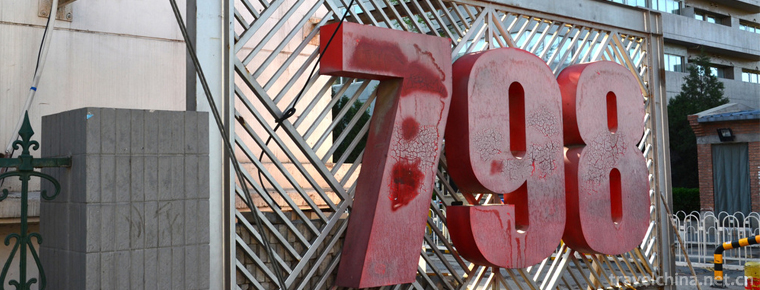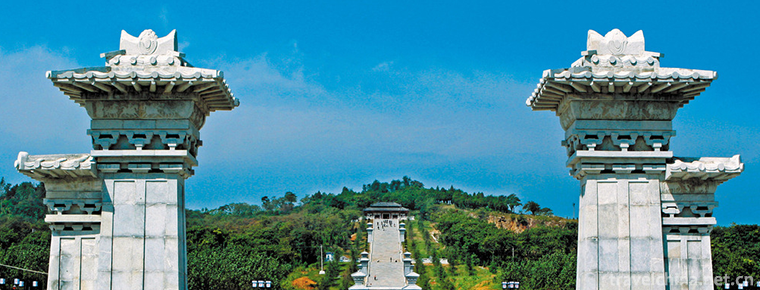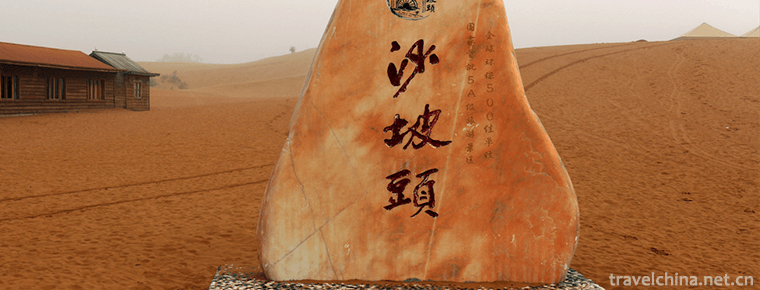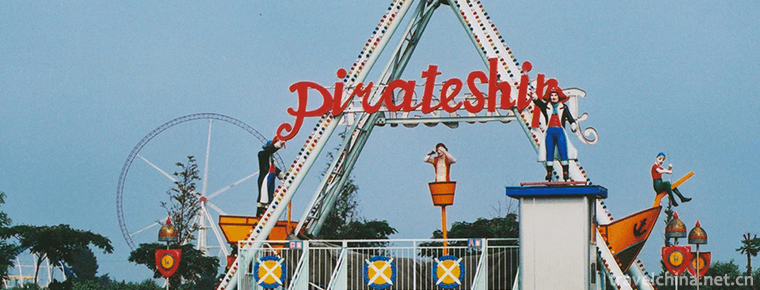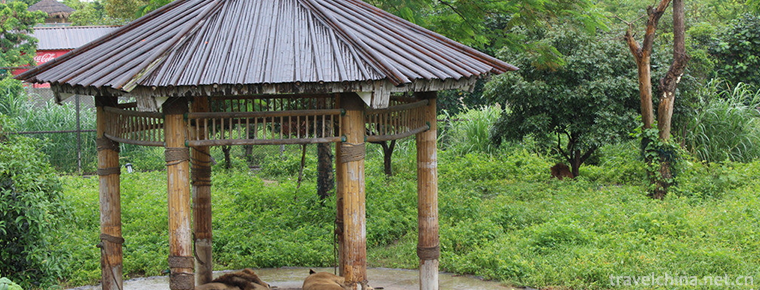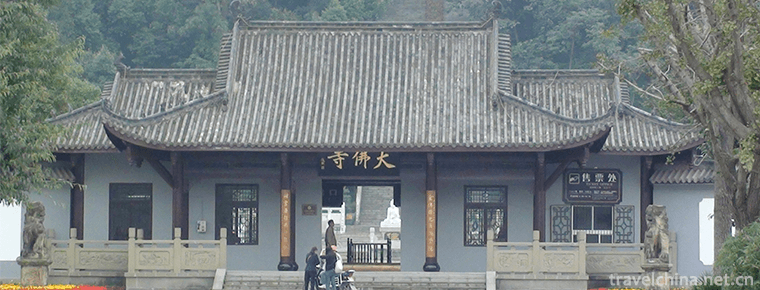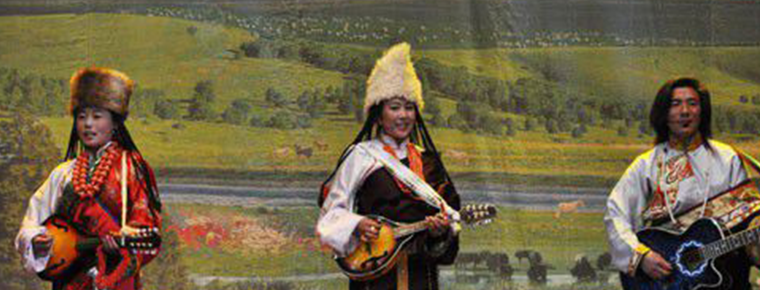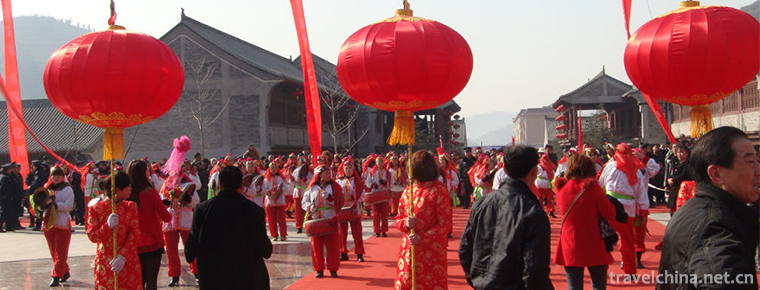Zhoucun Ancient Mall
Zhoucun Ancient Mall
Zhoucun Ancient Mall, also known as Street, is located in Zhoucun District, Zibo City, Shandong Province. The main road of Shandong Province, Jiqing Expressway, has Zhoucun Exit and 309 National Highway around the city. It is known as "dry wharf", "Jinzhou Village", "silk town" and "the first village in the world". Now it is a provincial key cultural relics protection unit, national AAAA level tourist attractions, and as the development focus of Shandong Province's "cultural history and folklore" tourist area, it has been listed in the "overall tourism development plan of Shandong Province".
The total area of the scenic spot is 60.5 hectares, mainly composed of streets, Silk Street, Yinzi Street and other ancient streets. There are more than 50,000 square meters of well-preserved ancient buildings in Ming and Qing Dynasties. There are many historic sites in the scenic area, with many streets, shops and different architectural styles. The combination of Chinese and Western cultures is rare in Shandong Province and Jiangbei Province. It is still playing its commercial function. It is praised by experts of China Ancient Architecture Protection Committee as "China's Living Museum of Ancient Commercial Architecture".
As an outstanding representative of Chinese ancient commercial culture, the ancient mall still maintains its original appearance and historical essence of the Ming and Qing Dynasties. After years of salvage recovery and protective development, Qianxiangyi, Ruijixiang, Folk Customs Exhibition Hall, Anglo-American Tobacco Company Exhibition Hall, Today's Tax-free Monument, Zhuangyuan Mansion, Ticket Exhibition Hall, Yangjia Grand Courtyard, Da Dye Fang, Kui Xing Pavilion Temple Group and the characteristic snack Zhoucun Burgers here have been formed. Zibo Art Museum and more than 10 scenic spots with strong knowledge and interest.
Zhoucun Ancient Mall is a national historical and cultural street, the birthplace of Shandong culture, film and television shooting base based on the three major brands. The documentary "Searching for the Ancient in Zhoucun" produced by CCTV "Exploration and Discovery" reproduces the development process of Zhoucun Ancient Mall in the way of scene reproduction. The famous TV series "Dry Wharf", "Da Dye Fang", "Chuangguandong" and the famous director Zhang Yimou's film "Living" all take this as the main shooting base.
Scenic spot
After hundreds of years of wind and rain, Zhoucun Ancient Mall is still intact. Its streets are vertical and horizontal, with numerous shops and different architectural styles.
It is praised by experts of China Ancient Architecture Conservation Commission as "China's Living Museum Group of Ancient Commercial Architecture", which has high tourism value. Zhoucun Ancient Mall is composed of streets, silk streets, Yinzi streets, silk streets and other ancient commercial blocks. It is now a city-level cultural relics protection unit, provincial excellent historical buildings, provincial key tourism development projects and national AAAA-level tourist attractions.
In the south of the ancient commercial city, there are the old site of the command headquarters of Shandong Jiaoyuan and Kuixing Pavilion, and in the north, there are Ming Temple, Qianfo Pavilion and Huilong Bridge, which are the gathering places of the natural and Humanities of Zhoucun. The main street of the ancient commercial city, also known as the street, is the largest and oldest commercial street in Zhoucun. It was built in Yongle of Ming Dynasty (about 1410 A.D.) and Chongzhen of Ming Dynasty (1636 A.D.). It preliminarily laid the embryonic form of the street. At the intersection of Silk Street and Yinzi Street in the South and Shuoyimen in the north, it is about two miles long (about 1000 meters). The Arctic Pavilion crosses the middle, dividing the street into two parts, north and south. The present situation is basically reserved for the South section, with a total length of 400 meters. By the late Qing Dynasty, the eight auspicious names of Meng's old army in Zhangqiu had been running business here, with rich businessmen gathering from far and near, and the streets gradually became the commercial and trade centers of distribution and grocery stores. In the 30 years of Guangxu in Qing Dynasty (1904 A.D.), after Zhoucun was established as a commercial port, the scope of commercial trade was further expanded. Nearly Qingdao and Jinan, as far as Beijing, Tianjin, Shanghai and Guangzhou, there were frequent business contacts with them. The development of street commerce entered its heyday. The proverb goes, "The street is not big, but it is advancing rapidly."
Ancient ruins
Sites of Ancient Human Life
Huangguding Site is located on the North Bank of Fanyang River, 20 miles southeast of Zhoucun Village. Patriotic Site On the West Bank of Ganhe River in the southwest suburb of Zhoucun Village, there were many clay black pottery pieces, tiles, floor tiles, bean handles, stone ware, red pottery (see fax here), pot mouth edge, tripod foot, lid, handle, bowl, dish, bean, stone axe, spinning fiber. These two sites belong to Longshan Cultural Site and lasted to the Qin and Han Dynasties. At the merchant site 20 miles southeast of Zhoucun Village, a large number of red baked earth and pottery, tiles, decorative tiles, bones, tall-handled bean fragments and praseodymium were unearthed, which belonged to the Shang, Zhou and Han Dynasties.
Ancient city of Wuqiang
Located 13 kilometers northeast of Zhoucun Town, it belongs to the northern suburb town. Rammed earth, bricks and tiles still exist. It was Wuqiang County Governance from the Liu and Song Dynasties of the Southern and Northern Dynasties to the Kaihuang Dynasties of the Sui Dynasty. It lasted 178 years. Its village name Guxuanzhuang evolved from the word "old county".
Ancient city of Tu Gu
In the Western Han Dynasty, Tugu County was set up, 21 kilometers southwest of this week's village. It was named for its abundant local drum rattan. Gaoqi was merged into Weiguo County. After the abolition of Tugu County, four villages were established around the old city, and the villagers used to be collectively called the ancient city according to their surnames.
Main attractions
Thousand Buddha Temple Group
On the East Bank of the Beishou Zhuohe River, the main building of Qianfo Pavilion was built in the Tang Dynasty. It is a two-storey brick building with sulphur glazed tiles and dome eaves. There are wind bells hanging at the four corners and eight big characters carved on the bricks: "wind and rain are smooth, Guotai Min'an". It is dedicated to Sakyamuni's three-body Buddha, Heng III Buddha. There are also Sanyi Hall, offering sacrifices to Liu Bei and Zhang Fei.
Silk Street
Formed in the early Ming Dynasty, it is the silk market. In the Ming and Qing Dynasties, there were hundreds of thousands of mulberry trees and hundreds of thousands of mulberry trees. The trading center of silk cocoon and raw silk was Zhoucun. There were more than a dozen silk shops in that year. Henan, Shanxi, Hebei and even Japan, Russian guests gathered here, so they named Silk Market Street.
Silver market
In the early Qing Dynasty, it was a commercial financial market. There were semicolons in the famous Dade Tong, Dade Heng, Da Dechuan, Sanjin Yuan, etc. Money flowed through the world like water. At its most prosperous time, there were 128 Qianzhuang Ticket Numbers.
Bing Ling Gong Temple
Bingling Gong Temple is located in the east gate of Wangcun. It was rebuilt in Ming and Qing dynasties before Ming Dynasty. Five main halls and four Eastern and Western corridors were used to worship Prince Bing Ling Gong of Daiyue, and eighteen Arhats and seventy-two places were used to worship him. In order to rebuild the Golden Body for Bingling Gong, the Western Temple of Sacrifice and Sanguange still exist today.
Dong Gong Temple
Another name is Xiaoxian Temple, located in Dong Yongshan, the eastern suburb of Zhoucun. It was built before the Ming Dynasty. The front yard offered sacrifices to Jade Emperor and the gods of Platinum Star, Queen Mother, Guanyin Bodhisattva. The main hall of the backyard offered sacrifices to Dong Yong, the son of Han Dynasty, hanging a plaque of "human model", with a statue of a farming ox on both sides. The northwest corner was Zhinu Pavilion. Zhinu held a golden shuttle and a couple of children and daughters in front of her knee. According to Changshan County Chronicle, there is no frost in winter and no hail in summer around Dong Gong Temple for several miles, which is an anomaly. There is an ancient Chinese pagoda at the northern crossroads of Miao Temple and a "Huaiyin Stele" under the tree. In the mid-Ming Dynasty, there was a Huaiyin Academy in Dong Gong Temple. Four local scholars, Liu Yixiang, Quqiao, Han Xueshan, and Han Xueshan studied here at the same time, returned home to pay homage to Xiaoxian when they left office. A Mingzhi Lyric poem. Rural people put the poem "Leshi" in the ancestral temple, known as the "Four Jinshi Stele".
Stone garden
On the northwest side of the winding tower, it is the garden of Bifu, where the water was glistening and the stones were lined. The mysterious elephants, the Lingbi, the Kui Xing, the moon cave, the wormwood, the Fengxiang, the hanging clouds, the Tai servants, the autumn hawks, and the Ezi, each known as "ten friends", were named "stone friends". When they set up their accounts at the age of Pu Song, they set up their beds every summer. Colourful chapters, today's relics still exist.
Shang Shu Fu
Shangshu House is located in Xipu Village, Wangcun Town. It is part of Shangshubi's former residence in the late Ming Dynasty. In the mid-Kangxi Period, Bo Songling set up an account here to teach for more than 30 years, and returned home only at the age of 71. Here I wrote a great literary work, Strange Tales from a Liaozhai Studio.
Shangshu Mansion was built in the late Ming Dynasty. The existing mansion covers an area of about 3000 square meters, with a building area of more than 1000 square meters and more than 100 houses. It is a three-way courtyard. The front courtyard main room is "Churan Tang" and the plaque is titled "Bi Ziyan". The three main rooms are the places where Pu Songling taught, wrote and lodged. The north side of the middle courtyard is "Zhenyi Pavilion", which is the place where Bi Fu stored official clothes. There is a "butterfly pine" in front of Zhenyi Pavilion. The branches stretch flat, the crown of the tree is like an umbrella, like a butterfly with flapping wings. The front of the backyard is Wanjuan Building, the third floor building, which is Bijia's library at that time.
Traffic information
The attractions are about 75 kilometers away from the airport and 90 minutes by car, 21 kilometers away from the railway station and 90 minutes away from the bus station and 3 kilometers away from the bus station.
Bus routes:
You can take No. 96 bus to Zhoucun Railway Station in Zhangdian District of Zibo downtown, then transfer to No. 238 bus or No. 239 bus, and get off at Zhoucun Street Station to Zhoucun Ancient Mall.
Self-driving Guidelines:
Jiqing Expressway - Zhoucun Exit South - Zhengyang Road - Zhoucun District Government Center West - Xinjian Road - Zhoucun Ancient Mall.







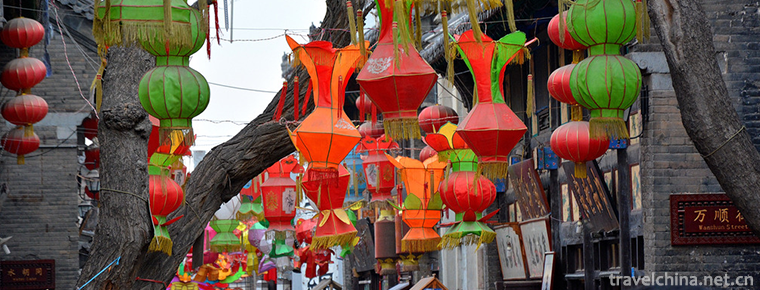
-
798 Art Area
Da Shan Zi area, Jiuxianqiao street, Chaoyang District, Beijing, China.
Views: 860 Time 2018-10-12 -
Mount Mangdang Han culture tourism scenic spot
Located in Yongcheng City, Henan Province, Mangdao Mountain Han Culture Tourist Area is a national AAAAA-level scenic spot which integrates landscape sightseeing, cultural appreciation and ecological .
Views: 199 Time 2018-12-09 -
Shapotou National Nature Reserve Ningxia
Shapotou: National AAAAA class tourist attraction, national desert ecological nature reserve, global environmental protection 500 best units, national fitness 20 famous landscapes, special prize for s.
Views: 95 Time 2018-12-12 -
Zhalong Nature Reserve
Zhalong National Nature Reserve is the largest and world-famous Zhalong Wetland in China, located 30 kilometers southeast of Qiqihar City, Heilongjiang Province. With a total area of 210,000 hectares.
Views: 201 Time 2019-01-13 -
Xiangshi Zoo
Xiangshi Zoo is invested and constructed by Dongguan Yuye World Industrial Investment Co., Ltd. The total investment of the project is estimated to be 350 million yuan..
Views: 139 Time 2019-02-25 -
Big Buddha Cultural Tourist Area in Zigong Rong County
The Dafo Cultural Tourist Area of Zigong Rong County was opened to the outside world in 1982. It covers an area of 32,470 square meters and has a building area of 3,403 square meters. There are a wide.
Views: 198 Time 2019-03-22 -
Zamuni of Tibetan Nationality Playing and Singing
"Zamuni" is also called the Six Stringed Orchestra, a traditional Tibetan plucked instrument. Mainly spread in Lhasa, Shannan, Ali, Lazi (Bahir), Sakya, Angren, Dingri and other places.
Views: 116 Time 2019-04-15 -
Neutralization Festival
Zhonghe Festival, a traditional Chinese folk festival, is on the second day of February, but the date at that time was on the first day of February. With the evolution of history, it was changed to th.
Views: 378 Time 2019-08-03 -
Brown Fan Dance
On the day of the grand Brown fan dance festival, adult men gather in groups on a square with their own delicacies and rice wine every day, and hold a large-scale Brown fan dance activities by arrangi.
Views: 381 Time 2019-08-16 -
Longhua Baxian Mountain Giant Buddha
Longhua Baxian Mountain Giant Buddha is located in Baxian, Longhua Town, Pingshan County, Yibin City, Sichuan Province. Since the Bamiyan Buddha in Afghanistan was bombed by the Taliban.
Views: 301 Time 2020-10-16 -
Panzhihua in the Sui Dynasty to Yuan Dynasty
At the beginning of Sui Dynasty, Yanzhou was still set up, which was renamed Xining Prefecture and Guazhou Prefecture, and became Yueyi county again. The five counties of Yanzhou established by the Northern Zhou Dynasty were abolished, and the other five counties were subordinate .
Views: 137 Time 2020-12-14
